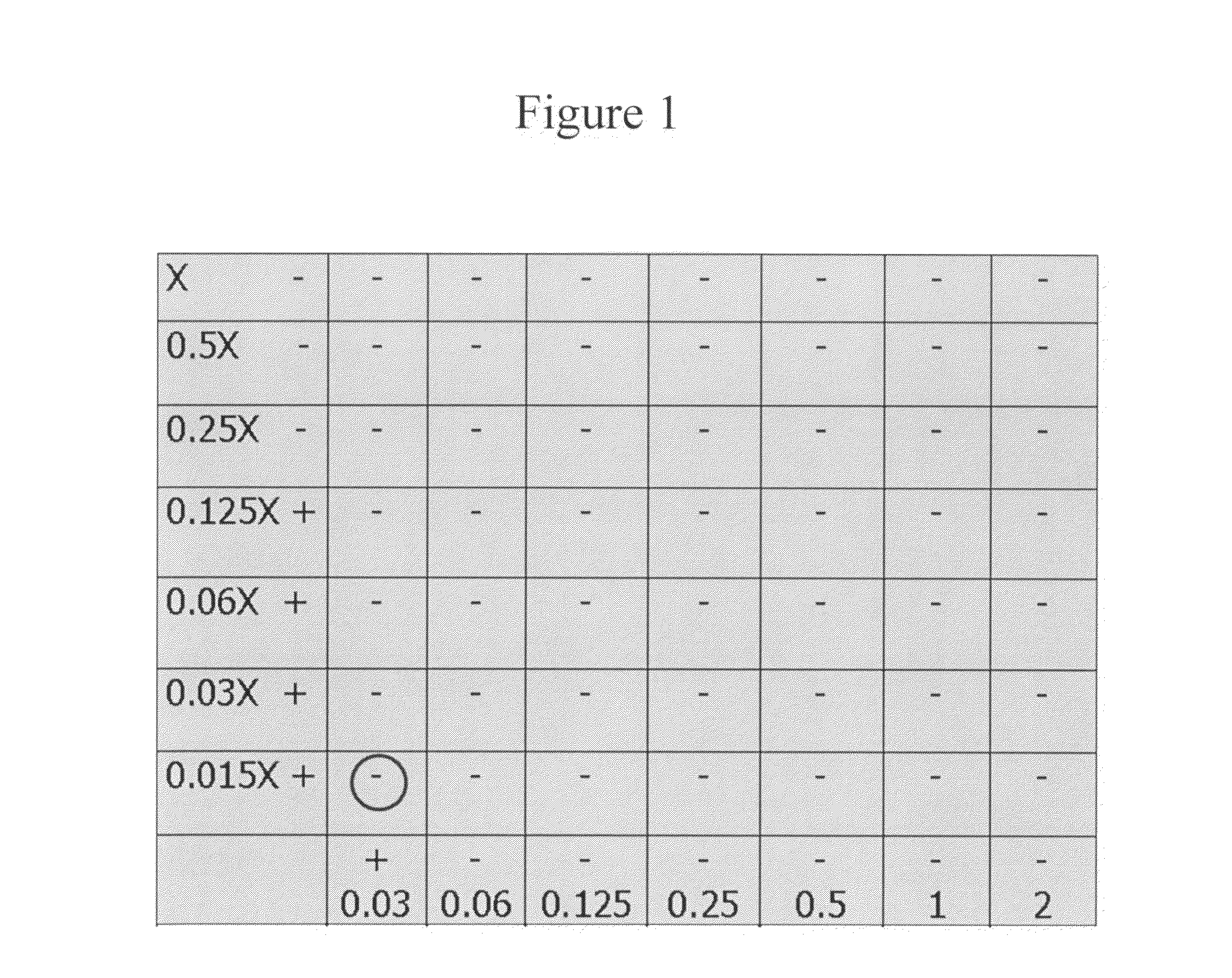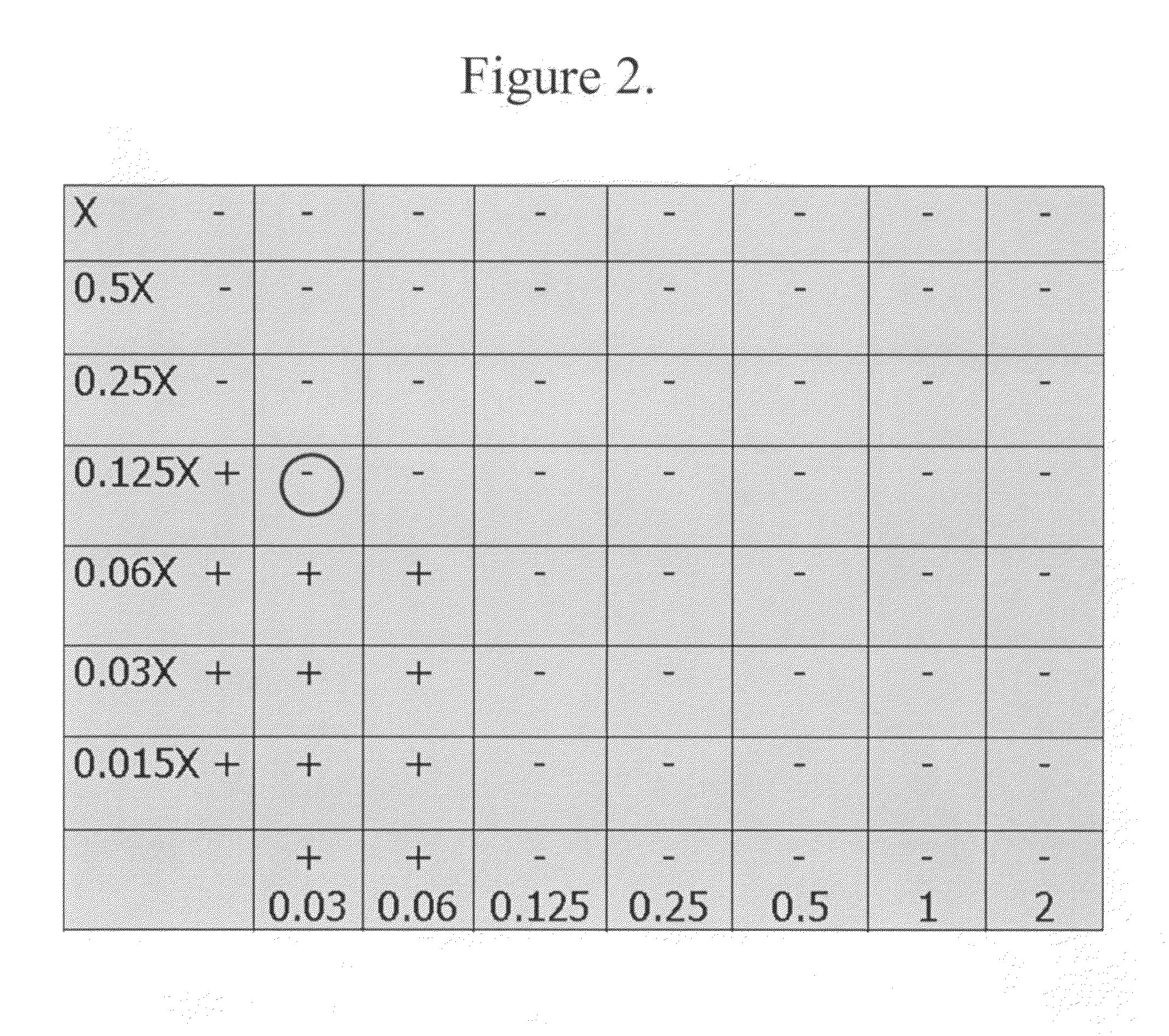Treatment for candidia infections
a technology for candidia infections and treatment, applied in the field of candidia infection treatment, can solve the problems of high contagious condition, easy to get infected by foot, and difficult to cure, and achieve the effects of less or no release of chlorine dioxide, no harm to the user's liver, and less or no infection
- Summary
- Abstract
- Description
- Claims
- Application Information
AI Technical Summary
Benefits of technology
Problems solved by technology
Method used
Image
Examples
examples demonstrating
THE EFFECTIVENESS OF CHLORITE SALTS
[0139]Example 1
[0140]Composition D was prepared by combining 15 g (2%) clotrimazole cream with 0.4 g (2%) sodium chlorite solution. pH was maintained at about 6.
[0141]Subject C had a moderate growth of fungus evidenced by yellowed discoloration of ⅓ of the right digit's toenail. A prominent lengthwise ridge ran across the nail and served as a demarcation point of the end of evident fungal infiltration of the nail. She also had a dark discoloration on her left digit one along with white vertical striations.
[0142]She applied the premixed chemical component by rubbing the cream into affected periungal tissue, her nail, cuticle and under the distal edge at least once a day, but no more than three times a day. She was instructed to administer it twice a day. Dark discoloration on right middle front of toe L1 faded with use. After 49 days, the nail appears normal on right 1st toenail. Even though patient compliance was irregular her result was excellent....
study 4
Composition Study 4
[0285]Subject R.
[0286]Background: Male Subject R formerly used 3 step process detailed in patent application Ser. No. 12 / 587,495. After a positive visual result within two months with clear signs that fungus was still present, though was visually much improved, subject R abandoned treatment for approximately 6-7 months. Nails were re-infected / relapsed during that period.
[0287]He asked for a simpler treatment regimen, and asked to resume treatment; ONE STEP was developed.
[0288]Toes R4-5: Comp C 2% clotrimazole with 2% CS pH 6
[0289]Toe R1 Composition J (2% clotrimazole alone) for two weeks, relapse ensued.
[0290]Toes R1, 2, 3: ONE STEP
[0291]Toes L1: ONE STEP (Composition D) followed by D1
[0292]Toes L3-5 Composition C
[0293]RESULTS: All treatments except J show improvement. Composition D was preferred. Composition D1 is most preferred.
COMPOSITION D Subject C
[0294]Background: Subject C is a 53 year old female. She estimates that she has had symptoms of Onychomycosis fo...
example 4
Fungal Inhibitory Concentrations
[0299]Trichophyton mentagrophytes and Trichophyton rubrum were grown in broth culture with differing concentrations of sodium chlorite alone, different concentrations of itraconazole alone and combinations of each.
[0300]10 mg of 80% sodium chlorite was dissolved in 1 ml DMSO. Additional DMSO was added to dilute the mixture to 1600 micrograms / ml in DMSO, and other lesser dilutions, to form sodium chlorite test reagents. The test reagents were diluted 1:50 with culture broth. Separately dilutions of itraconazole were prepared. The sodium chlorite test reagent / culture broth was diluted 1:2 with the dilutions of itraconazole. Those combinations were diluted 1:2 with broth inoculums of Trichophyton mentagrophytes ATCC MYA 4439, and Trichophyton rubrum ATCC MYA 4438.
[0301]As shown in the examples, in vitro data was generated and the minimum inhibitory concentrations (MIC) tests were determined in broth culture using ATCC MYA 4438. The results are shown in F...
PUM
| Property | Measurement | Unit |
|---|---|---|
| pH | aaaaa | aaaaa |
| pH | aaaaa | aaaaa |
| weight percent | aaaaa | aaaaa |
Abstract
Description
Claims
Application Information
 Login to View More
Login to View More - R&D
- Intellectual Property
- Life Sciences
- Materials
- Tech Scout
- Unparalleled Data Quality
- Higher Quality Content
- 60% Fewer Hallucinations
Browse by: Latest US Patents, China's latest patents, Technical Efficacy Thesaurus, Application Domain, Technology Topic, Popular Technical Reports.
© 2025 PatSnap. All rights reserved.Legal|Privacy policy|Modern Slavery Act Transparency Statement|Sitemap|About US| Contact US: help@patsnap.com



